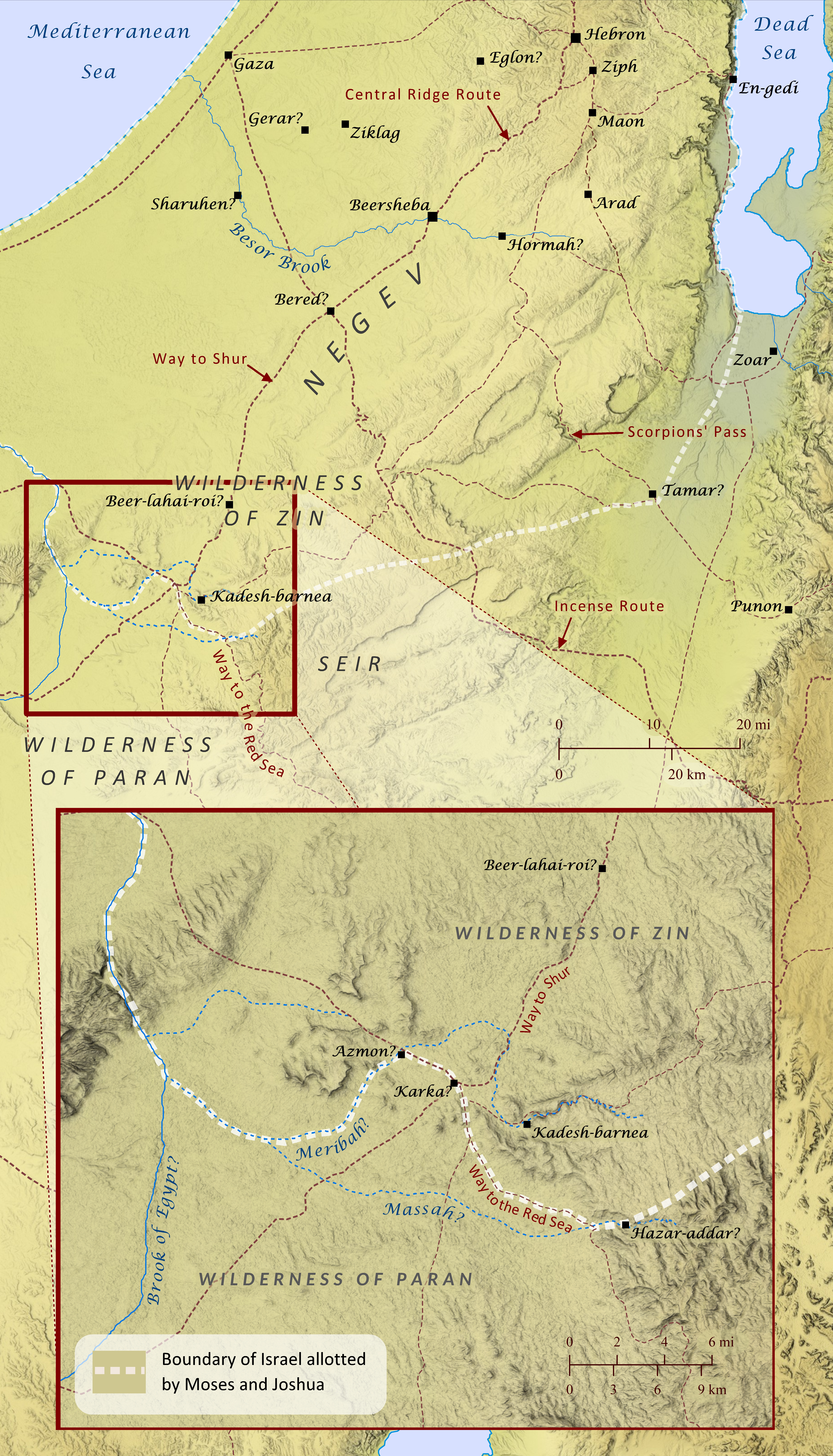
Kadesh-Barnea and Its Surroundings
Though located in the arid desert region south of Israel, the town of Kadesh-barnea was relatively well supplied with water, making it one of the most important oases in the entire region. Multiple springs can be found within 6 miles (10 km) of Kadesh, including Ain Qedeis (possibly Hazar-addar), Ain el-Qudeirat (Kadesh-barnea), el-Qoseimeh (possibly Karka), and el-Muweilah (possibly Azmon), all of which drain into the Wadi al-Arish, likely the biblical Brook of Egypt, about 14 miles (23 km) to the west. Kadesh and its springs are sandwiched between the biblical locations of the Wilderness of Zin and the Wilderness of Paran, which explains why Kadesh is sometimes associated in Scripture with Zin (Numbers 20:1; 33:36; Deuteronomy 32:51) and other times with Paran (Numbers 13:26). The site is first mentioned in Scripture as one of the places through which Chedorlaomer’s army passed on its way to reconquer the cities of the plain (Genesis 14), and apparently at that time it was called Enmishpat, meaning “spring of judgment” (see “The Battle at the Valley of Siddim” map). Later Kadesh became a central location for the Israelites after they left Mount Sinai (and possibly before this as they traveled to Mount Sinai; see “The Route of the Exodus” map) and prepared to enter Canaan. From there they sent spies to scout out the land, but when the spies returned with an intimidating report about the inhabitants of Canaan, the people became afraid and longed to return to Egypt (Numbers 13-14; Deuteronomy 1:19-45). As punishment, the Lord condemned that generation to wander in the wilderness, apparently in the general area of Kadesh, until the people died off. Moses’ sister Miriam later died at Kadesh and was buried there (Numbers 20:1). Then, when the springs of Kadesh must have been producing little water, the people became angry with Moses again, so he struck a rock, causing water to flow from it (Numbers 20:2-13). After this, Moses called the place Meribah, meaning “quarreling” (Numbers 13; see also Numbers 20:24; 27:14; Deuteronomy 33:8; Psalm 81:7; 95:8; 106:32). It was also from Kadesh that Moses sent messengers to the king of Edom, asking permission to pass through his land as the Israelites made their way to Canaan. When the king of Edom refused, they turned back and traveled to Mount Hor instead (Numbers 20:14-22; Deuteronomy 1:46-2:1; Judges 11:16-17; see “The Journey to Abel-Shittim” map). After the Israelites entered Canaan, Kadesh marked the extreme southern boundary of Israel’s land (Numbers 33:4; Joshua 10:41; 15:3). Kadesh is never explicitly mentioned in Scripture after this except in reference to earlier events that happened there.